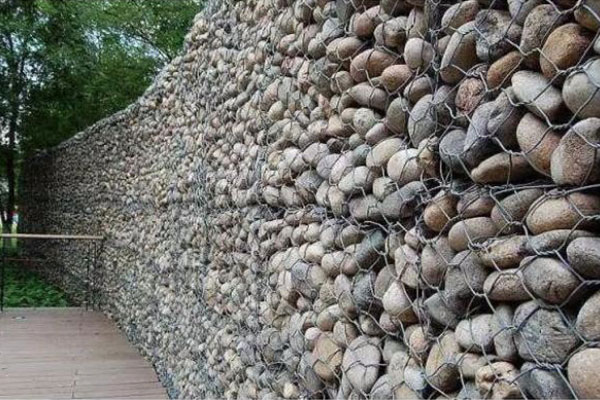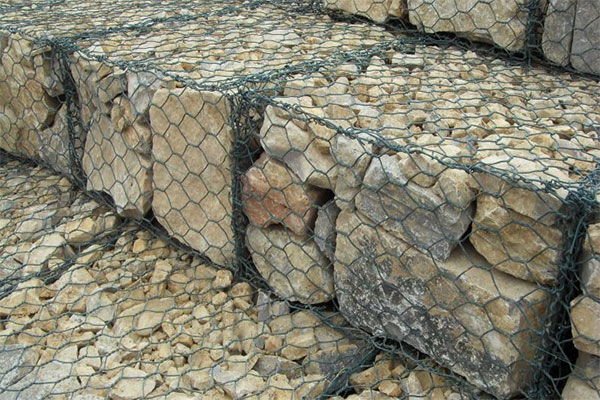What is a Gabion? A Comprehensive Guide
Gabions, though not a household term, play a crucial role in various construction and landscaping projects. These simple yet effective structures have been utilized for centuries, offering a versatile solution to erosion control, retaining walls, and even artistic landscape design.

What is a Gabion?
A gabion is essentially a wire cage or basket filled with stones, gravel, or other durable materials. These structures are commonly rectangular or cylindrical in shape, and their main purpose is to provide stability and support in different civil engineering and landscaping scenarios. The term “gabion” is derived from the Italian word “gabbione,” meaning “big cage,” which aptly describes the appearance and function of these structures.
History of Gabions
The use of gabions dates back to ancient civilizations. The earliest recorded use of gabions can be traced to the ancient Egyptians, who employed them in the construction of fortifications and defensive walls. The concept spread across the Mediterranean, with the Greeks and Romans incorporating gabions into their military engineering.
During the Renaissance, gabions experienced a revival as military architects sought innovative ways to fortify cities and military installations. In the modern era, gabions found application in infrastructure projects and environmental protection initiatives, becoming an integral part of civil engineering and landscape design.
Applications of Gabions
- Erosion Control: One of the primary uses of gabions is in preventing soil erosion. When strategically placed along riverbanks, shorelines, or hillsides, gabions act as a barrier against the forces of water, reducing erosion and preserving the integrity of the landscape.
- Retaining Walls: Gabions serve as an excellent material for constructing retaining walls. The permeability of the structure allows water to pass through, reducing pressure against the wall and preventing damage from hydrostatic forces. This makes gabions a durable and environmentally friendly solution for retaining walls in various terrains.
- Flood Protection: In regions prone to flooding, gabions are often employed to create barriers that mitigate the impact of rising waters. The combination of sturdy wire cages and heavy stone fillings creates an effective defense against floodwaters.
- Landscaping and Architecture: Beyond their utilitarian uses, gabions have gained popularity in landscaping and architecture for their aesthetic appeal. Gabion walls and structures are employed to create visually striking features in parks, gardens, and urban spaces.



Constructing Gabions: A Step-by-Step Guide
Building gabions requires careful planning and execution to ensure their effectiveness and longevity. Here is a step-by-step guide to constructing gabions:
- Site Preparation: Assess the terrain and determine the appropriate location for the gabions. Clear the area of debris, vegetation, and any obstacles that may interfere with the construction process.
- Material Selection: Choose durable and appropriate materials for the wire cages and fillings. The wire mesh should be corrosion-resistant, and the fillings, typically stones, should be of sufficient size and weight to provide stability.
- Mesh Assembly: Construct the wire mesh cages according to the desired dimensions. Ensure that the mesh is securely fastened, with tight connections to prevent stones from escaping.
- Filling the Cages: Fill the wire cages with the selected materials, layering them evenly to create a stable structure. Compact the fillings as you progress to achieve maximum density.
- Closing the Cages: Once the cages are filled, securely close them to ensure the contents remain in place. This may involve folding or twisting the wire mesh to create a tight seal.
- Placement: Position the gabions in the designated area, whether for erosion control, retaining walls, or another purpose. Secure them in place to prevent shifting.
- Finishing Touches: Consider adding vegetation or decorative elements to enhance the aesthetic appeal of the gabions, especially in landscaping projects.
Conclusion
Gabions represent a time-tested and versatile solution in civil engineering and landscaping. From preventing erosion to creating visually appealing structures, the applications of gabions are diverse and impactful. Whether you’re facing soil erosion challenges or aiming to enhance the aesthetics of your outdoor space, gabions offer a reliable and visually striking solution.

